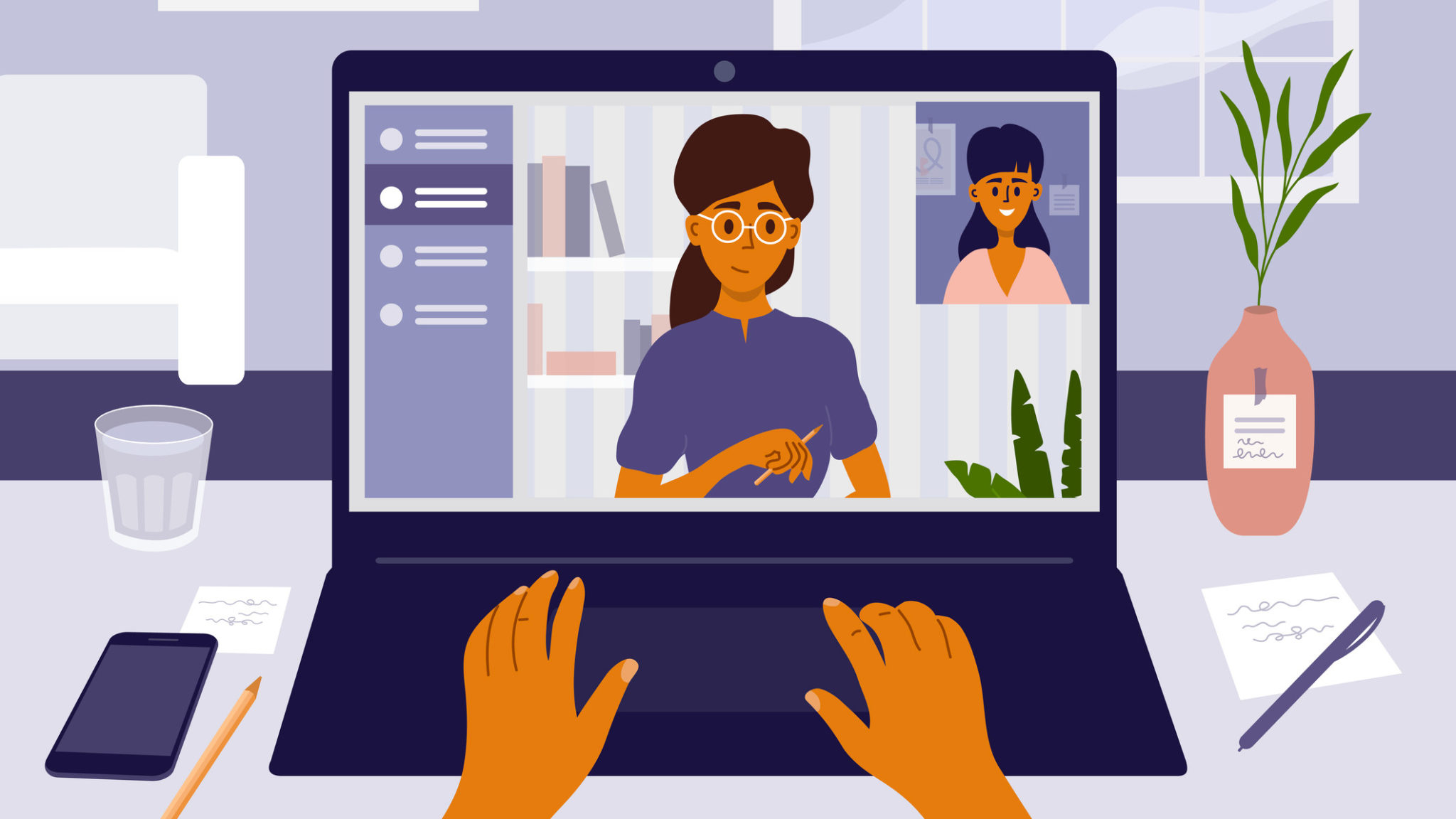
The pandemic has upended, well, the entire planet. That includes the traditional recruitment process on Bay Street. After decades of little change, it has undergone a total overhaul. Most notably, if you want to land a second-year summer job in downtown Toronto, you’ll have to interview with the largest firms via videoconference. But how can you make a meaningful connection through a computer screen? We asked three experts to tells us their best advice.
Familiarize yourself with the video platform
“It’s kind of awkward to have these video conversations, but this is the new normal,” says Jennifer Lau, director of career services at UBC’s Peter A. Allard School of Law. “Each employer is likely going to use their own videoconference platform. I would download all the software in advance and do a practice run with a friend on that particular platform.” These will range from Microsoft Teams, Zoom and WebEx, to the lesser-used BlueJeans, GoToMeeting, and Pexip.
Make sure to be at your desk about 10 to 15 minutes prior to the interview. Then you can join the meeting one to two minutes before it’s set to begin.
Expect things to get messy
The online recruitment process is new to everyone. Lau predicts that the recruiters are likely to be nervous as well, so be kind, gracious and learn how to roll with the punches.
“Something is going to go wrong,” says Lau. “Your technology is going to fail. Your internet is going to cut out. Your cat is going to walk through the background. It’s not going to be perfect and that’s okay.” To reduce the likelihood of a mishap, grab the contact information of the interviewer before the video call. That way, if something goes awry, you can continue the interview over the phone. (When recruiters list a phone number in their email signature, ask ahead of time if you can call them if the video cuts out.)
Look at the camera
“In a regular meeting, you walk in and get a feel for the room,” says Richard Maxwell, a media trainer and presentation coach in Toronto. “But with videoconferencing, we don’t have that ability.” To make up for the lack of body language, speak clearly and slowly, and look into the camera. “The idea is to make the virtual meeting as close to an in-person meeting as possible. So make sure your camera is at eye level.” And no iPads. When placed on a desk, the camera is too low; if hand-held, it appears unprofessional.
Look sharp
When it comes to the dress code, Lau suggests business attire. (This includes pants.) “I have been telling students to wear shoes and socks, even though you’re in your home,” she says. “Just so you feel like you’re in a business meeting.”
Having spent years in the broadcast industry, Maxwell has learned that pastels don’t look particularly professional on screen. Neither do solid whites (which might darken your face) nor blacks (which will bring out any bags under the eyes). Opt, instead, for highly saturated colours, like sapphire blue, emerald green and Ruby Red.
Avoid distractions
Lau suggests a neutral and distraction-free background. “It doesn’t have to be a white wall, but the things that are in your background shouldn’t be distracting from you,” she says. Virtual backgrounds are fine, but they should be professional (not the beach) and work properly (no glitches or floating heads).
Use your hands
“When you move your hands, it actually impacts your inflection,” says Jeff Ansell of Jeff Ansell & Associates, a Toronto-based company that offers media, presentation and crisis-communications training. Even if the interviewer can’t see them, it makes a difference in how you come across. “Strong hand gestures can help you trick your brain into believing you’re confident when you’re not.” More importantly, your own natural hand movements will make you look more comfortable on camera and help with nervousness.
Relax
The night before the interview, get as much sleep as possible. “If you’ve got back-to-back interviews and have a few minutes in between, don’t just go on Facebook,” says Lau. “Stand up. Walk around your apartment. Go to the bathroom.”
Don’t forget to breathe. “Breathing is critically important,” says Ansell. “People have a tendency to hold their breath, so I encourage people to write the letter ‘B’ on their notes in front of them.”
